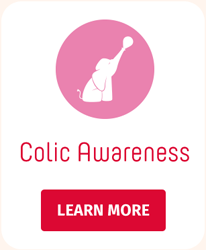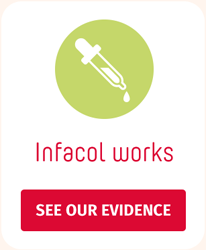About Colic
Infant colic (IC) is commonly observed in babies aged between a few weeks and four months old1 and is often encountered by primary care healthcare professionals, especially health visitors. There is uncertainty about its cause and no gold standard remedy or preventive action. IC is typically associated with what is perceived as excessive crying in a baby who appears to be otherwise healthy,1 although few sources agree on how much crying is considered excessive. Various classic symptoms are described and these include crying for at least three hours a day, for at least three days a week for at least three weeks (Wessel’s ‘rule of threes’). However recent real world evidence involving 4004 parents2 suggests that – not surprisingly – less than 1 in 10 (8.1%) allowed their infant to cry for more than three weeks before making a diagnosis of what they believed to be colic.
One of the few areas of agreement is that colic can be distressing and exhausting for the parents of babies with the condition. The role of healthcare professionals, therefore, is often a source of advice and reassurance that the condition is not harmful to the baby and will typically resolve at three or four months of age.
Infacol has worked with the Bounty Health Network on a CPD certified Professional Update called Infantile Colic: the problem with definition and diagnosis which offers a good summary of colic, its possible causes, treatment options and other conditions that might be mistaken for colic.
References
- NHS Choices http://www.nhs.uk/conditions/Colic/Pages/Introduction.aspx
- Goldman, Beaumont, A real world evaluation of an oral treatment for infant colic based on the experience and perceptions of 4004 parents, British Journal of Nursing 2017, Vol 26. No 5 (Suppl 1)
- Bounty Health Network Professional Update: Infantile Colic: the problem with definition and diagnosis











